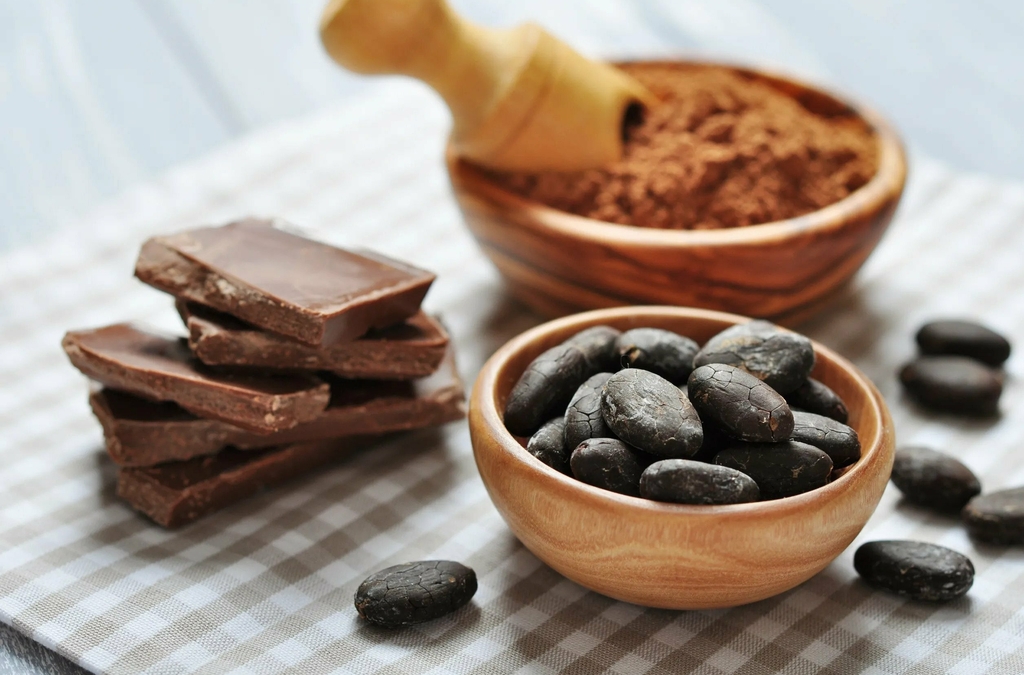Your web browser is out of date. Update your browser for more security, speed and the best experience on this site.
Emission of organic acids during chocolate production
From cocoa bean to chocolate, where are the most VOC released?

Introduction
This study compares emissions of volatile organic compounds from two products during the chocolate-production process, namely the cocoa beans and cocoa mass. When producing chocolate, cocoa beans are roasted and then broken with the shell being removed. In mills, the remaining pieces are then further ground into cocoa mass.
Various ingredients are then added to the cocoa mass to create flavourful chocolate. By analysing the two process intermediates, the process emitting the most VOC can be determined.

Capturing emitted VOC
To promote VOC emissions and mimic the production process, cocoa beans and cocoa mass were heated in sealed containers.
Through dynamic headspace sampling, a pure nitrogen stream is going to carry the released VOC to a suitable adsorbent or air pocket.
The VOC can be determined through chemical analysis, with the general odour determined through sensory analysis.

Which VOC are present?
The presence of volatile organic acids can be expected in products containing chocolate. This group of components requires a specific method to analyse these representatively.
Through Organic Acid Screening, it was determined that approximately four-times higher concentrations of organic acids were detected in cocoa mass than in beans, mainly due to the presence of acetic acid.
In addition to organic acids, other VOC were also measured in higher concentrations with the cocoa mass than at the cocoa beans through VOC Screening. Several pyrazines were detected in both samples that contribute to the typical chocolate odour.

Do the samples stand out in terms of odour?
In addition to the chemical analysis of VOC, sensory analysis was also performed on the two samples. Through this study, we were able to determine whether a higher concentration of organic acids and VOC detected also results in a different and/or more intense odour. Here it appears that the odour of the sample of cocoa mass was slightly more intense and rated as somewhat more unpleasant.
Between the two samples, however, there was little difference in odour description. Because of the high concentration of acetic acid, 2-methylpropanoic acid and 3-methylbutanoic acid, you would expect the samples to smell rather sour, but because of the combination with other VOC, such as aldehydes and pyrazines, the samples were described as dark/bitter chocolate or cocoa.
Conclusion
In the headspace of cocoa mass, a much higher concentration of VOC and organic acids is generally detected and sensorially, the sample is perceived as just slightly more unpleasant and intense. During the chocolate production process, it can be assumed from this that during the grinding of cocoa beans into cocoa mass, the greatest emission is of VOC and odour. Despite the high concentration of organic acids, other VOC also clearly affect the odour of the sample, and the odour character was not described as acidic.
How can we help?
Do you have questions about VOC analysis? We can be reached via the channels below or leave a message on our contact page.